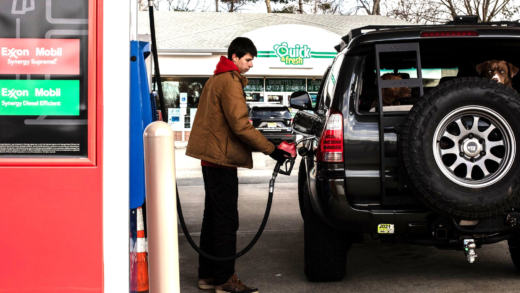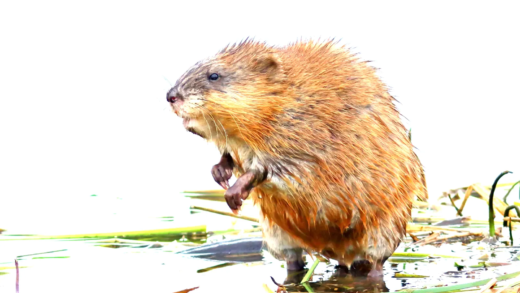Fighting fire with fire involves using controlled burns to manage wildfires. This method has historical roots, dating back to Indigenous practices. Controlled burns can reduce fuel loads and promote biodiversity. However, risks include potential air quality issues and soil erosion. Decision-making for using fire involves assessing fuel availability, weather, and community safety. Overall, controlled burning is a vital tool in fire management.
Understanding the Phrase: What Does ‘Fight Fire with Fire’ Mean?
“Fighting fire with fire” refers to a firefighting technique that involves using fire as a tool to control wildfires. The idea is to create controlled burns that eliminate fuel for a larger fire, effectively managing its spread. This method is not just a catchy phrase; it’s a strategic approach to fire management. When firefighters conduct a controlled burn, they intentionally set a fire in a controlled environment. This reduces the overall fuel load in a forest or grassland, making it less likely for a more destructive fire to take hold.
Historical Context: Examples of Fire Control Through History
Throughout history, the use of fire to control fire is well documented. Indigenous peoples of North America practiced controlled burning for thousands of years to promote healthy growth of plants and manage wildlife habitats. They understood that fire could rejuvenate the land, making it more fertile. In the 20th century, the U.S. Forest Service adopted these techniques, emphasizing controlled burns as a vital tool in forest management. Historical examples also include the use of fire in ancient Rome, where controlled burns helped manage land for agriculture. These examples highlight that using fire as a tool is not a modern invention, but rather a practice with deep historical roots.
The Basics of Controlled Burning: How It Works in Forest Management
Controlled burning, or prescribed burning, is a technique employed by forest managers to maintain the health of ecosystems. The process involves several steps:
- Planning: Before any fire is set, detailed planning is essential. This includes assessing weather conditions, fuel types, and potential smoke impacts.
- Execution: Firefighters ignite the burn in a controlled manner, often using tools like drip torches to ensure precision.
- Monitoring: Throughout the burn, teams monitor the fire’s behavior to ensure it stays within designated boundaries.
This method not only helps in reducing hazardous fuel loads but also promotes the growth of fire-adapted species. Overall, controlled burning is a proactive approach that supports forest health, biodiversity, and reduces the risk of catastrophic wildfires.
Techniques and Methods: How Firefighters Use Fire as a Tool
Firefighters utilize various firefighting techniques that leverage fire as a tool. One prominent method is the use of controlled burns. This involves igniting small sections of land under controlled conditions to remove excess fuel. Firefighters often employ backburning, where they set a fire along the edge of a wildfire to consume fuel and create a barrier. Another technique is flanking, where firefighters attack a fire from its sides, minimizing risk and maximizing control. Additionally, they use tools like drip torches and fire retardants to manage fire spread and protect vulnerable areas. These methods not only help in extinguishing fires but also in preventing future outbreaks.
Risks and Benefits: The Pros and Cons of This Approach
Using fire as a firefighting tool presents both risks and benefits. On the one hand, controlled burns can significantly reduce the risk of larger wildfires by eliminating fuel sources. They promote healthy ecosystems and biodiversity by allowing fire-adapted species to thrive. However, there are risks involved. Controlled burns can escape containment if weather conditions change unexpectedly, leading to unintended wildfires. Additionally, smoke from burns can pose health risks to nearby communities. Therefore, careful planning and execution are critical to minimize these risks while maximizing the benefits of using fire as a management tool.
Weather’s Role: How Conditions Affect Firefighting Effectiveness
Weather plays a crucial role in the effectiveness of firefighting techniques. Factors such as temperature, humidity, and wind speed can significantly impact fire behavior. For instance, high temperatures and low humidity create conditions that can lead to rapid fire spread. Wind can carry embers, igniting new fires far from the original source. Conversely, rain can aid in extinguishing fires but may also create challenges for controlled burns. Firefighters must constantly monitor weather conditions to adjust their strategies accordingly, ensuring they can effectively manage and control fires.
Urban Applications: Can This Method Work in Cities?
While fighting fire with fire is primarily associated with rural and forested areas, its principles can be adapted for urban settings. In cities, controlled burns can be used to manage vegetation in parks or near homes, reducing the risk of wildfires spreading into urban areas. However, the application in urban environments requires careful consideration of structures and populations. Firefighters might use small-scale prescribed burns in these areas, ensuring that safety protocols are strictly followed to prevent any accidents. Overall, while the urban application of these techniques is challenging, it holds potential for enhancing fire safety.
Decision Making: When Do Firefighters Use Fire as a Tool?
Firefighters determine the optimal moments to use fire as a tool based on a variety of factors. The decision-making process involves assessing conditions and weighing risks. Key factors include:
- Fuel Availability: Firefighters evaluate the amount of combustible material available. A high fuel load may necessitate a controlled burn to reduce future wildfire risks.
- Weather Conditions: Wind speed, humidity, and temperature are crucial. Optimal conditions can enhance effectiveness, while adverse conditions can pose significant risks.
- Ecological Goals: The intended ecological outcome influences the decision. Fire may be used to promote growth of fire-adapted species or to manage invasive plants.
- Community Safety: Protecting nearby communities is paramount. Firefighters aim to prevent wildfires from encroaching on residential areas.
This decision-making process is critical in ensuring that controlled burns are executed safely and effectively, minimizing risks while maximizing ecological benefits.
Environmental Impact: What Are the Effects of Controlled Burning?
Controlled burning has notable environmental impacts, both positive and negative. On the positive side, it can:
- Enhance Biodiversity: Controlled burns can stimulate the growth of diverse plant species, promoting a healthy ecosystem.
- Reduce Hazardous Fuel Loads: By removing excess vegetation, the risk of larger, uncontrolled wildfires decreases significantly.
However, there are potential downsides:
- Air Quality Issues: Smoke from controlled burns can affect air quality and health in nearby communities.
- Soil Erosion: Post-burn, soil can be more susceptible to erosion, particularly if vegetation is removed completely.
Overall, the ecological benefits of controlled burning often outweigh the negatives, provided that careful planning and execution are in place.
Conclusion: The Importance of Fighting Fire with Fire
Fighting fire with fire is not just a phrase; it embodies a strategic approach to wildfire management. Controlled burns play a crucial role in reducing hazardous fuel loads, promoting biodiversity, and enhancing ecosystem health. While the method carries risks, such as potential smoke impacts and the chance of escaped fires, careful planning mitigates these concerns. The decision-making process for when to employ fire as a tool is complex, involving assessments of ecological needs and safety protocols. In summary, the practice of controlled burning represents an effective and environmentally beneficial strategy in the ongoing battle against wildfires.





Comments are closed.